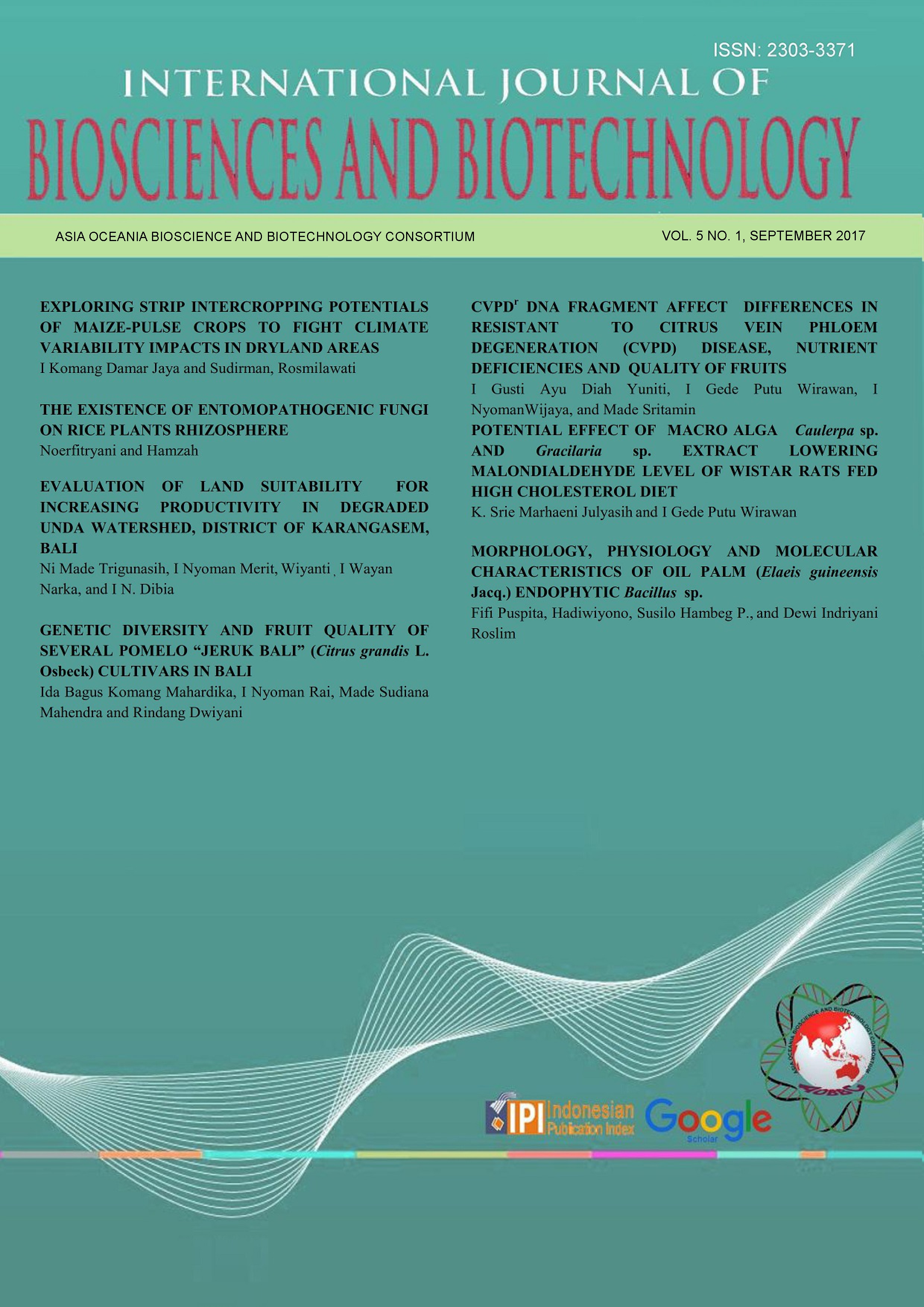EXPLORING STRIP INTERCROPPING POTENTIALS OF MAIZE-PULSE CROPS TO FIGHT CLIMATE VARIABILITY IMPACTS IN DRYLAND AREAS
Abstract
Recent climate variability affects maize production in dryland areas. This study aimed to explore potentials of strip intercropping of maize-pulse crops in improving productivity of dryland areas. The study was conducted in dryland area of Gumantar village, North Lombok (8.253654 S, 116.285695 E). Soil in that area was categorized as poor soil with the following properties: 0.46% organic matter, 0.05% N total (Kejdhal), available P 11.25 ppm (Olsen) and exchangeable K 0.77 me%, pH 7.0 and field capacity 29% (%/V). Rainfall data were collected during the growing seasons of 2016/2016 and 2016/2017. A field experiment of maize-pulse crops strip intercropping was conducted during a dry season of 2016. The component crops in the strip intercropping were maize NK212, maize NK7328, mungbean Vima-1 and groundnut Hypoma-1. All component crops were grown as monocropping and strip intercropping of maize-pulse crops in 8.4 x 5.0m plot size for each treatment. To measure productivity of the strip intercropping, relative yield total (RYT) and benefit to cost ratio (B/C) were calculated. They were great variations in rainfall in the last two years. From the experiment, data showed that all the strip intercropping treatments have RYT and B/C values >1 meaning that strip intercropping of maize-pulse crops is more productive than monocropping and is feasible to be practiced in dryland areas. With the short growing period and their drought tolerant nature of the pulse crops, especially mungbean, the strip intercropping can be used to fight climate variability impacts in dryland areas.






